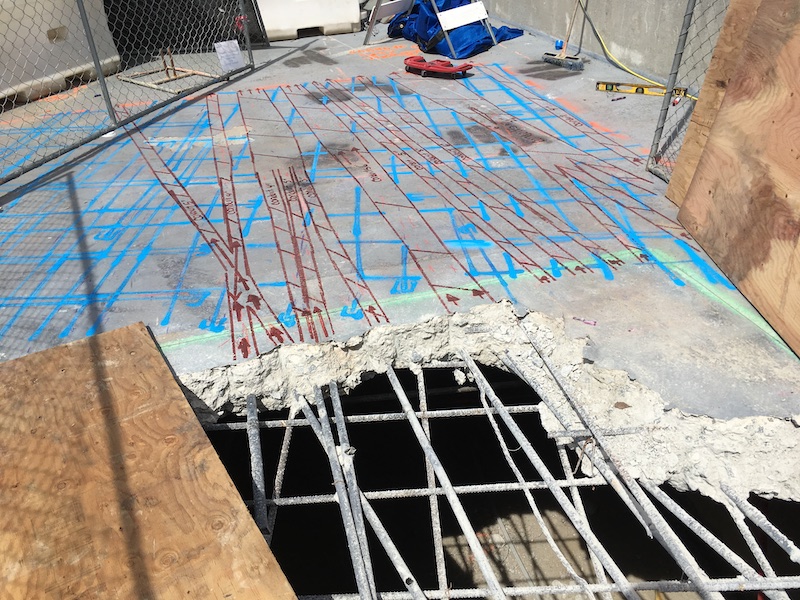Concrete Scanning: An Important Action Towards Ensuring Architectural Honesty and Safety
In the realm of building and infrastructure upkeep, the significance of concrete scanning can not be overemphasized. This meticulous procedure holds the vital to unveiling prospective hazards concealed below the surface of relatively strong frameworks. By utilizing sophisticated innovation and approaches, concrete scanning offers as an essential tool in ensuring that the honesty and security of buildings and bridges are upheld to the highest requirements. Nevertheless, past its surface-level ramifications, the duty of concrete scanning prolongs much deeper than fulfills the eye.
Significance of Concrete Scanning
Concrete scanning plays an essential duty in making sure the architectural integrity and safety of structures and facilities jobs. By making use of innovative technologies such as ground-penetrating radar (GPR) and electro-magnetic induction, specialists can non-destructively examine concrete structures to identify possible flaws, voids, ingrained items, and reinforcement format. This procedure makes it possible for early discovery of anomalies that could jeopardize the security of a structure, avoiding pricey problems and making certain the security of occupants.
Prior to boring, reducing, or coring right into concrete, scanning assists identify the accurate locations of rebar, post-tension cords, and other ingrained elements, reducing the threat of unexpected hits that could lead to architectural weak points. Additionally, concrete scanning help in quality control by validating the thickness of concrete covers and discovering any disparities that may influence the total resilience of the framework.
Technology for Concrete Inspection

Benefits of Early Detection
Timely detection of structural problems can substantially mitigate risks and guarantee the longevity of construction tasks. By recognizing prospective issues beforehand in the building and construction process, stakeholders can take positive procedures to attend to problems before they escalate right into bigger and a lot more pricey problems. Among the key benefits of early detection is the prevention of structural failings, which can position serious safety and security threats and cause job delays and financial losses.
Additionally, early detection enables prompt repair work and maintenance, which can help extend the lifespan of the framework. By addressing concerns immediately, building and construction teams can avoid pricey repair services or even the demand for early replacement of architectural elements. This proactive strategy not just saves money and time but additionally improves the overall safety and security and resilience of the building and construction job.
In addition, very early detection can enhance project preparation and decision-making by providing stakeholders with useful insights right into the condition of the framework. Armed with this info, job managers can make enlightened choices relating to building and construction timelines, methods, and materials, leading to a lot more efficient and successful job end results.
Guaranteeing Architectural Security
Ensuring the architectural security of a building job is extremely important to its safety and security and longevity. Architectural stability refers to the capability of a structure or infrastructure to preserve its type and feature under ecological problems and various tons. To attain this, detailed assessment and monitoring of the structure are vital. Concrete scanning plays an essential function in making certain architectural security by detecting possible issues such as voids, news delamination, or reinforcement corrosion that could jeopardize the stability of the framework gradually.
By making use of innovative scanning modern technologies like ground-penetrating radar (GPR) and electro-magnetic induction, building experts can non-invasively check concrete structures to identify locations of problem beneath the surface. This positive strategy enables the very early detection of problems additional info or weak points, making it possible for punctual repair services or reinforcement to avoid architectural failings.
Regular concrete scanning throughout different construction stages and throughout the life cycle of a structure can aid preserve its security, reduce risks, and make certain the safety and security of passengers. By prioritizing architectural stability via concrete scanning, building and construction jobs can boost their durability and sturdiness, ultimately adding to higher safety and durability.
Preventing Important Failures
Carrying out regular inspections, such as concrete scanning, can reveal covert problems like gaps, splits, or corrosion that could compromise the integrity of a structure. By utilizing advanced scanning innovations like Ground Permeating Radar (GPR) or Concrete X-ray, engineers can non-destructively evaluate the problem of concrete and determine weak factors that need support or repair.

Conclusion
To conclude, concrete scanning plays an important role in making sure architectural honesty and safety by using advanced technology for early detection of potential issues. This proactive approach helps avoid vital failures and ensures the stability of frameworks. It is vital to focus on concrete examination as a standard practice to secure the longevity and safety and security of structures and more tips here framework.
Concrete scanning plays an essential role in making certain the architectural stability and safety of buildings and framework jobs. Furthermore, concrete scanning aids in top quality control by verifying the density of concrete covers and detecting any kind of inconsistencies that may impact the total longevity of the structure. Concrete scanning plays an essential duty in guaranteeing structural security by discovering potential concerns such as voids, delamination, or support rust that can compromise the honesty of the structure over time.

In conclusion, concrete scanning plays a critical duty in ensuring architectural integrity and security by utilizing innovative innovation for early discovery of potential issues.